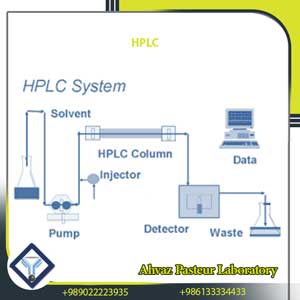
High Efficiency Liquid Chromatography
High Efficiency Liquid Chromatography
Chromatography is a method for the detection, separation and measurement of materials. HPLC (High Efficiency Liquid Chromatography) is one of the most widely used chromatographic methods.
HPLC consists of two fixed and moving phases. Which is a solid phase or liquid phase and a fluid phase. This method removes a mixture of the mixture on a constant phase using the moving phase. First, the compounds dissolve in a solvent, then flow under a high pressure into a column of chromatography, thus separating the mixed compounds in the column.
HPLC is a dynamic absorption process. When the molecules of the tested material move from the dense and porous grains of the column, they absorb the surface.
HPLC features
- Using the HPLC method is very easy.
- The time required for analysis is very small.
- In the HPLC system, stationary and mobile two-phase systems operate with a competitive mechanism, which makes accurate analyzes.
- Determining the structure of polymers.
- Comparing the structure of various proteins.
- Detecting excessive molecular weight impurities.
- Evaluating hydrogen-bound water molecules.

HPLC system
Important parts of the HPLC machine
- Solvent transfer system
- Injector
- column
- Detector
- Computer to evaluate information
Solvents in HPLC
Solvents used in HPLC include methanol-acetonitrile-distilled water-buffers.
In HPLC, distilled water should be distilled twice for distillation and distilled water should be filtered prior to use with 0.45 microns aqueous filters.
Solvents should be of good quality (in terms of purity).
Injector
For injection, needles are used in different quantities. The volume of injection is 30 μL. The sample first comes into a part called the guard of calum or pericolum, which is a pillar guard and is filled with a material made of filler material. If the substance tested is impurities or reacts with the substance inside the column, it is done in a coral kale and does not reach the column of damage.
column
The choice of the column type is different from the material tested. The columns are filled with different materials. The stationary phase is in the form of small particles inside the column. Which is done by attaching and dispersing the sample components and passing the moving phase of the separation. The sample first enters the carcallum and then enters the column. The column’s work depends on the size of the particles inside the column.
